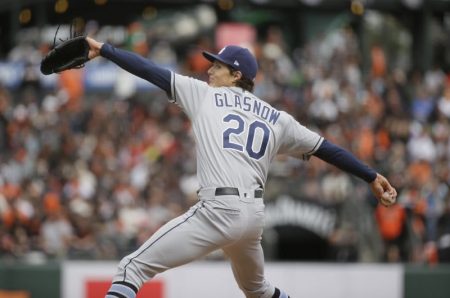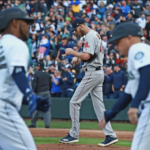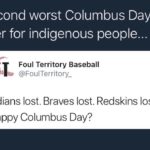The Tampa Bay Brand: Fiscally Sound, Value-Driven Baseball
 That’s right, baseball teams are brands. They offer fans a promise of who fans want the team to be. Who the team wants to be. And what the team may become. Winners? A rebuilding year for a .500 team? An entertaining team? A baseball brand.
That’s right, baseball teams are brands. They offer fans a promise of who fans want the team to be. Who the team wants to be. And what the team may become. Winners? A rebuilding year for a .500 team? An entertaining team? A baseball brand.
Brands are about consistency and quality. Eat a Big Mac in Southern California or London, it tastes the same. See a Yankees game at Fenway Park or on television, it’s still the same team. Might be more exciting at Fenway, but the game is the game. Expectations about the quality of play remain the same.
A game between Cincinnati Reds and Miami Marlins will be a baseball game, but not necessarily of the same quality as St. Louis against Milwaukee.
So, we expect the Yankees and Dodgers to win close to 100 games and make the postseason. We expect Mike Trout or Mookie Betts to be there for the MVP, Max Scherzer or Justin Verlander to contend for the Cy Young Award, and the Boston Red Sox or Houston Astros to challenge for the World Series. Just as Coca-Cola is not Pepsi. Google is not Yahoo. And the Reds are not the Cardinals. That’s why baseball brands are expectations of consistent quality and performance, yet the game is played the same way.
Why Has Tampa Bay Become So Good?
This season, once again, the Tampa Bay Rays are playing well. Going into Monday’s games, they own the best record in baseball, just ahead of the equally surprising Seattle Mariners. In 16 games, Tampa Bay is 12-4, playing at a .750 clip. Last season they won 90 games, surprising many baseball fans who did not expect them to even be a .500 team. The question now is, can they win 95 or more games this season to win the AL East?
They’ve gone from a third-rate brand (despite their lone World Series appearance in 2008) to a serious challenger for the division. Problem is, Tampa Bay is not surprising anyone, anymore. They’re good, and other clubs know it.
But why are they so good?
Tampa Bay is run by sharp baseball men who take smart chances and are unafraid to rearrange the deck chairs when the music stops. Erik Neander and Chaim Bloom, are the wizards behind Tampa Bay baseball.
These men who have devised a shrewd plan to compete in the American League East, which has worked across the rest of the league as well. They’ve chosen personnel to enhance this advantage. What is their strategy? Using openers. A bullpen stocked full with a young, talented lefty and righty arms who throw bullets mixed in with sliders and changeups that befuddle hitters.
And now that Tampa Bay has begun to brazenly steal talented offensive players from other teams, they not only prevent runs but can score runs in bunches. An effective combination.
So, Tampa Bay is led by contrarians who go about their business opposite of the way most teams do. They do not extend the contracts of older players. Going back to Carl Crawford who had a career year for Tampa Bay in 2010 and became a free agent after that season. The Rays GM then was Andrew Friedman, now the President of Baseball Operations for the Los Angeles Dodgers. Friedman did not offer an extension to Crawford, then 29 years-old, about to enter his age-30 season.
Instead, the Boston Red Sox inked Crawford to a lavish seven-year, $142 million contract, and after one mediocre season, the Red Sox unloaded Crawford, finding a trading partner in the Los Angeles Dodgers. This more of the usual is the way most of baseball has operated since free agency appeared in 1975. A good player completes his contract, a feeding frenzy ensues, and ownership drives up the player’s price.
But not Tampa Bay.
For example, last season, in what has to be viewed as a steal, already, Tampa Bay traded Chris Archer (that’s the older on the way down Chris Archer) to the Pirates for the hard-throwing right-hander Tyler Glasnow (who has already won three games the first 14 games of the season with 21 strikeouts his first 17 innings of work), the outfielder Austin Meadows (off to a fast start with a 1.242 OPS, six homers, 15 RBIs, and a .367 average), and a young, hard-throwing left-hander (a recent first-round selection of the Pirates) currently in the minors.
Ouch!
That’s a lot of young, first-round talent Pittsburgh traded. Throw in St. Louis’ contribution to their ascension, the talented outfielder Tommy Pham, and Tampa Bay has become a powerful contender with flexibility to adjust their roster come midseason.
How to Build a Powerful Tampa Bay Brand
What is the product of a baseball club? The promise of the nine players on the field and their effectiveness as a unit. Teams market their players to increase public awareness. They offer all sorts of promotional giveaways, integral to the art of building and popularizing a brand. They giveaway bobblehead dolls, caps and shirts. There are bat days, hat days, and t-shirt nights. Musical evenings. Fireworks. Anything to draw fans into the ballpark.
Despite promos, the Tampa Bay Rays have become an exciting product at Tropicana Field, at Chase Field in Phoenix or Yankee Stadium. When Tampa Bay rolls into town, opposing players, perhaps even fans, expect a quality opponent. And while the Rays do not have the legacy of the Yankees’ brand, built on the exploits of Babe Ruth, Joe DiMaggio and Mickey Mantle, Tampa Bay has been around since their first season in the American League in 1998. They’ve been in one World Series, and they did feature both third baseman Evan Longoria, and the hard-throwing left-hander David Price. Excellent players both.
In baseball, it’s a lot easier to buy-in on the core product and offer contract extensions to previously successful players, than scrap them, trade for top prospects and hope for the best.
Contrast Tampa Bay with the Yankees. The Yankees, rather than trading for young starters this offseason, re-signed two older pitchers in their mid-30s, J.A. Happ and CC Sabathia. About the same time, they traded away their best young pitcher, lefty Justus Sheffield, to Seattle. This is the reverse of the Tampa Bay model. The Yankees moved a young up-and-coming pitcher for an older, more experienced pitcher, James Paxton. Should it be any surprise that Paxton has not met the Yankees expectations so far this season, pitching to a 1-2 record with a 6.00 ERA? Paxton and Happ have been two of the reasons for the Yankees disappointing 6-9 start.
Add to the Yankees problems, their ace, Luis Severino, may miss May, June and perhaps July, if not more time, with a lat strain. Further burdening their middling starting staff. Naturally, local writers are penning articles urging the Yankees to sign Dallas Keuchel, another older player who has been injured and ineffective in the last few years. And even though he won the Cy Young Award when he was 28, he’s now in his age-31 season. Perhaps that’s why Keuchel and his agent, Scott Boras, are waiting for a team to suffer enough injuries to their starting pitching that they will be desperate enough to offer the expensive contract Boras is holding out for.
New blood. New talent, that’s the essence of innovation in baseball. And that’s why the Yankees have fallen short the last few years. They rely too much on older, tired starting pitchers rather than letting their youngsters learn how to pitch at the major league level. The problem is, the Yankees won’t find Severino in free agency and all the Dallas Keuchels in baseball will not be the savior that Tyler Glasnow may be.
So, You want to Change Your Brand?
Take chances on young talent. Don’t bury young players on the bench—let them play in high-pressure situations during the meaningless regular season. Give them at-bats. Start them. Showcase them.
Don’t offer contract extensions to older players, and if you do, don’t be fooled into believing those players will perform the way they did five years ago. Look at Albert Pujols. Robinson Cano. Big contracts. But they’re no longer their old selves. The baseball season is a long grind, and youth is key to success.
If you think the Yankees and Red Sox are oblivious about Tampa Bay’s invigorated competitive product, think again. The new Tampa Bay brand speaks volumes even from the West Coast of Florida.
























